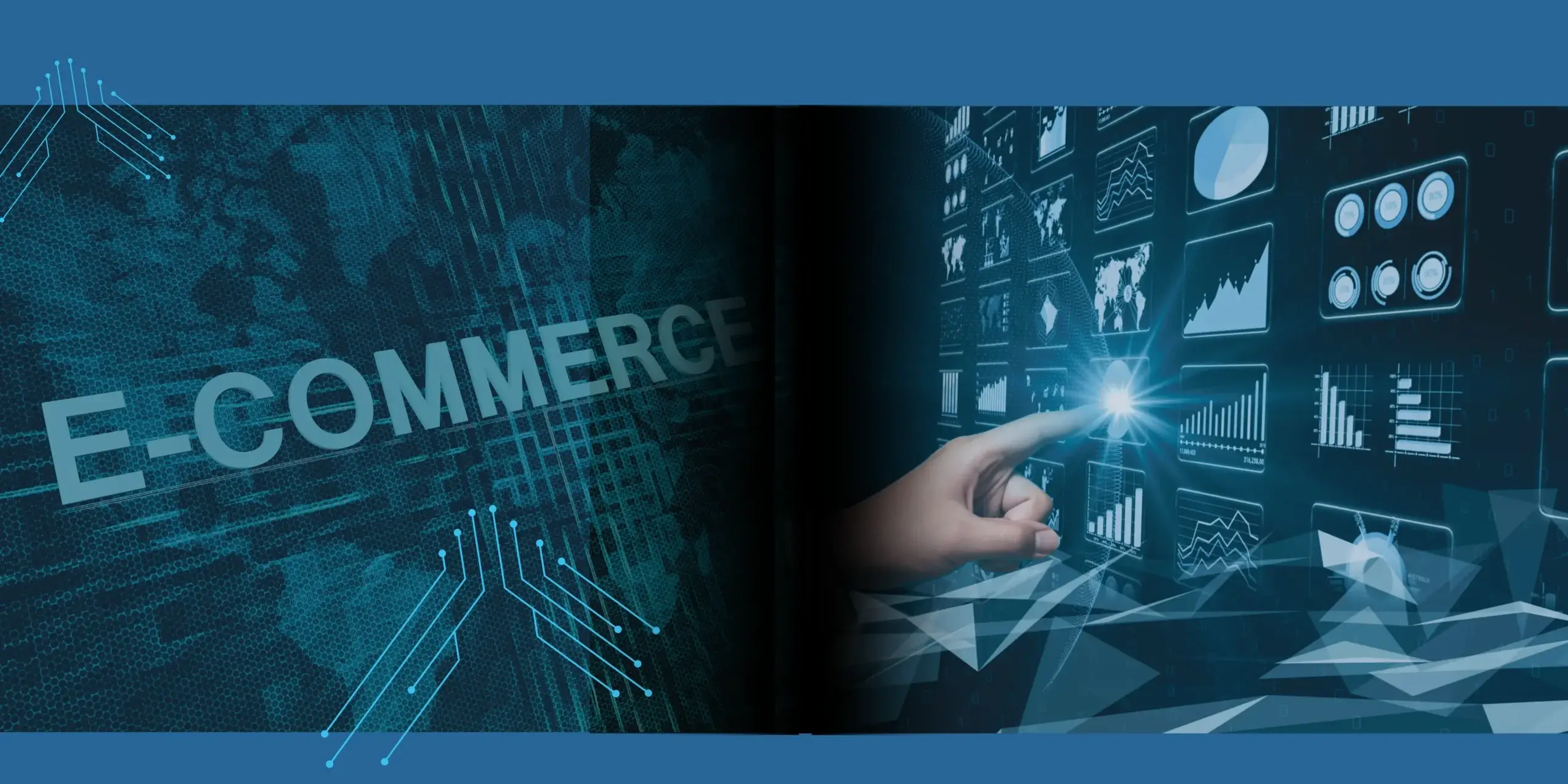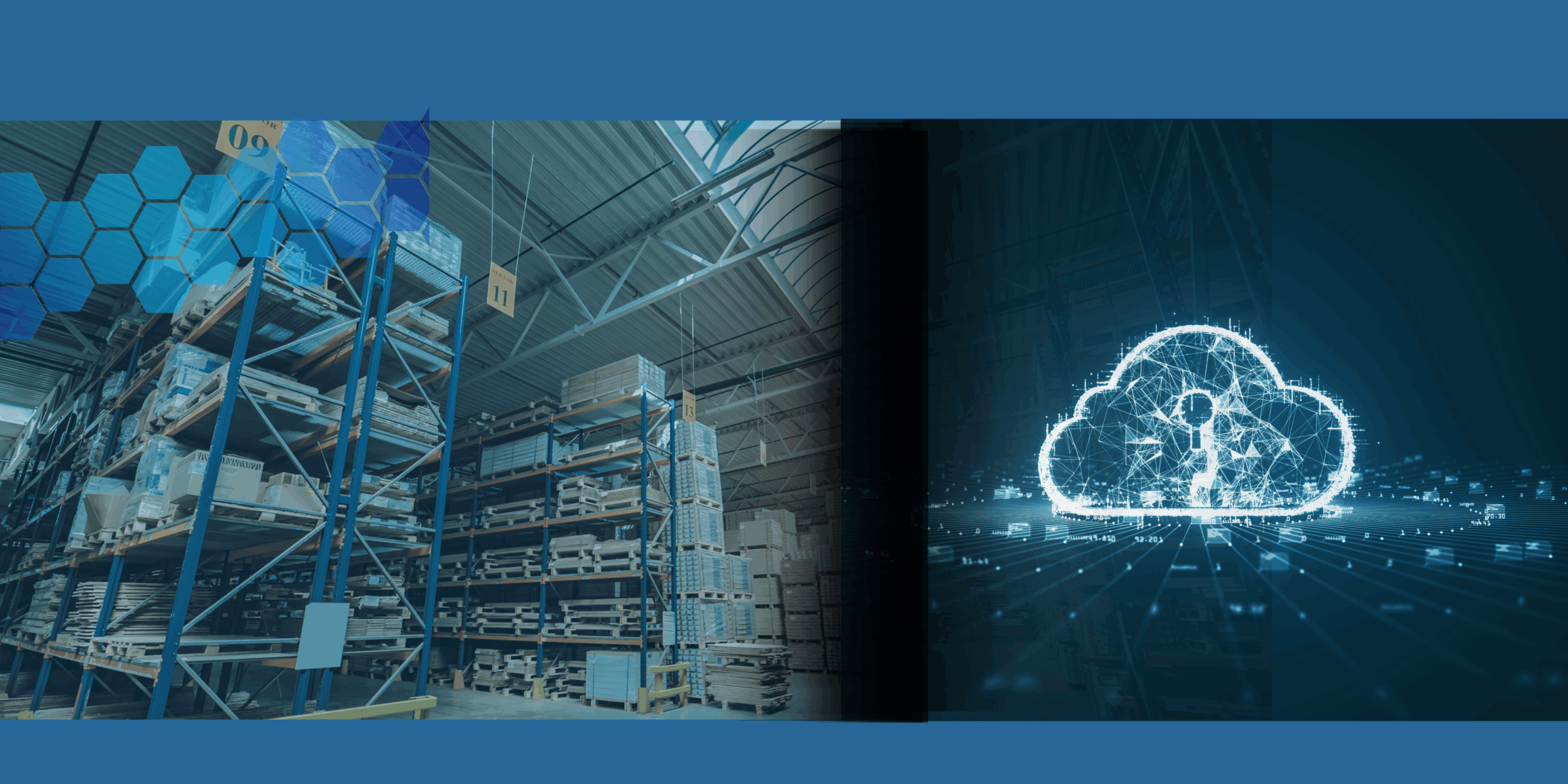15 Digital Transformation Strategies for Retail That Drive ROI and Results
Digital transformation means reshaping how your business works, adapts, and grows. Retail has moved far beyond launching an e-commerce site. Today, you’re expected to unify systems, simplify operations, and respond to customer needs in real time. That means replacing guesswork with data analytics, breaking down silos, and automating what slows you down.
In this article, you’ll learn 15 practical strategies, see how leading brands are applying them, and decide which direction makes sense for your business next.
But before we jump into the strategies, let’s start with the basics first.
What Is Digital Transformation in Retail?
Digital transformation in retail means rethinking how you run your business by using technology to connect systems, personalize the customer experience, and speed up decisions. You’ll be working on every layer, from inventory management and supply chains to marketing, operations, and analytics.
This shift is picking up fast.
According to Mordor Intelligence, the retail digital transformation market is set to hit $285.8 billion by the end of 2025 and $635.1 billion by 2030.
That means you have a lot of competition. If you want to see how these changes work in practice, check out this video:
Benefits of Digital Transformation in Retail
As you may already intuit, digital transformation gives you more control over outcomes by removing delays, improving decisions, and making operations more responsive. That’s because you’re not just adding tools but building a structure where automation, speed, and data work together.
These are the key benefits you can expect to see:
- Faster time to revenue: Checkout moves quicker, and real-time processes cut delays that slow conversions. That’s essential for at least 36% of organizations; these cite faster time to market as a primary driver for digital transformation.
- Improved customer experience: Shoppers get seamless omnichannel retail journeys and relevant offers without waiting. That’s essential because, according to McKinsey, 71% of consumers expect personalized interactions, and 76% feel frustrated when they don’t receive them.
- Operational efficiency: Automating tasks in inventory, support, and logistics helps reduce errors and overhead.
- Data-driven decisions: You can use predictive analytics to forecast demand, manage pricing, and run smarter campaigns.
- Greater agility: It’s easier to shift with market demands or launch new capabilities when you rely on modular, cloud-based systems. This allows faster responsiveness and more iterative operations
- Cost savings: You’ll reduce manual work and use cloud computing resources more efficiently. In fact, adopting more seamless FinOps methods usually lower those costs by 20%-30%, which is a solid advantage.
Strategies for Digital Transformation in Retail (With Examples)
It’s a well-known fact that to make real progress, you need practical strategies that solve real problems, not just ideas that sound good on paper. That’s why we gathered the best approaches retail leaders are using to modernize operations and deliver lasting results.
1. Omnichannel Integration
To create real consistency across your brand, you need to break down the walls between online, in-store, and mobile channels. Omnichannel integration brings everything together by letting your customers shop the way they want while giving your teams better control.
Zara does this well. Shoppers buy through the app and pick up in-store using RFID-tagged items for real-time inventory accuracy. Inditex (Zara’s parent company) rolled out RAIN RFID across 2,000+ locations and replaced manual stock checks with automated counts.
Here’s more info on how this tech works:
This lets them run “ship-from-store” models and maintain accuracy at scale. The result is better product access, faster fulfillment, and stronger customer engagement across channels.
2. Headless & Composable Commerce
Monolithic platforms limit speed and make personalization harder. With headless and composable architecture, you can decouple systems and update storefronts without rewriting backend logic.
Nike made this shift by adopting a headless CMS and React-based framework, which helped them create faster localized launches through APIs. This way, they started to serve mobile-first markets and adjust content quickly based on local demand.
Designing tech stacks this way allows you to improve agility, cut deployment time, and reduce dependencies between teams. It’s a clear step toward modernizing infrastructure in the retail industry and competing with more adaptable digital players.
3. Real-Time Inventory Management
Inventory miscounts cost you revenue and damage trust. Real-time management eliminates these gaps. Walmart tackled this by using Internet of Things (IoT) shelf sensors and computer vision to track shelf stock.
These smart systems send instant restock alerts and free up staff from manual tasks. The rollout started in Canada and expanded globally, which helped Walmart avoid stockouts while speeding up order fulfillment.
Syncing data across channels and integrating it into planning tools allows you to get real-time visibility across warehouses and stores. The impact extends to fewer missed sales and better overall flow across operations.
4. Customer Data Platforms (CDPs)
When data sits in silos, personalization fails. CDPs help by centralizing customer data into one actionable system. Sephora uses a CDP to link online browsing, loyalty data, and in-store purchases. The result is in-app recommendations that reflect personal preferences and real shopping behavior.
For example, it suggests restocks, complementary items, or trending products based on past habits. This drives higher customer retention and increases spend per visit.
With a CDP, you can start delivering relevant messages across every touchpoint. What’s more, it paves the way for stronger customer loyalty and smarter marketing decisions.
5. AI-Powered Personalization
Personalization starts with good segmentation, but goes beyond that to learning systems that adapt in real time. Artificial intelligence and machine learning allow you to fine-tune search results, promotions, and content based on individual behavior.
Amazon’s system does this by tracking browsing patterns, past purchases, and regional trends to adjust homepage deals and recommendations. Their engine doesn’t just respond to inputs but also predicts needs, like showing accessories for recently browsed products or surfacing top local deals.
With this approach, you’re using actual behavior to shape each journey, and hence, increase both conversion rates and brand affinity with every interaction.
6. Automation in Supply Chain
Keeping products stocked without waste is one of the toughest supply chain challenges. H&M addresses this with AI-driven forecasting tools that consider sales history, loyalty data, and external factors like weather.
These insights trigger automated reordering across stores and warehouses. The result is fewer overstocks, lower holding costs, and faster replenishment. H&M’s system even adjusts stock levels by region to align supply with local demand.
Building process automation into forecasting and procurement allows you to reduce manual intervention, improve accuracy, and support sustainability efforts. This shift can save you time and sharpen your ability to meet real-time market needs.
7. Cloud Migration
You probably know that running infrastructure on outdated servers limits scalability and resilience, especially during peak retail moments. That’s why Target shifted major workloads to Google Cloud to adopt containerized services and microservices for better flexibility.
During high-demand events like Black Friday, this setup scales resources automatically and avoids outages and slowdowns. Off-peak, Target reduces costs by scaling down unused capacity.
With cloud technology, you gain stronger disaster recovery, better performance, and simpler management at scale. This change gives your team room to innovate while handling spikes in digital traffic with less risk and more speed.
Now, this is a critical step for modern operations across the retail sector.
8. Self-Service & Smart Checkout
Friction at checkout still causes lost sales and lower satisfaction. Amazon Go tackled this by using Just Walk Out technology. If you’re not familiar with it, this is a mix of smart devices, cameras, and weighted inventory sensors to track what customers pick up in real time.
Shoppers enter by scanning QR codes, take what they need, and leave without stopping to pay. The system calculates charges automatically and sends receipts after exit. This model removes wait times, reduces staffing requirements, and shortens in-store journeys.
For you, adopting self-service kiosks or scan-and-go tools creates smoother traffic flow and increases conversion rates by turning checkout into a background process.
9. In-Store Edge Computing
Edge computing helps you act on data without waiting for cloud round trips. Walgreens uses in-store edge systems to process customer data locally as people browse. Sensors, mobile apps, and digital signage work together to deliver location-specific offers, such as discounts on nearby items based on your purchase history.
Processing happens instantly, which reduces lag and boosts the accuracy of customer behaviour systems. This also supports real-time shelf monitoring, store layout optimization, and dynamic content updates.
Moving key analytics to the edge helps you avoid delays that hurt engagement and unlock faster, more relevant responses inside physical locations.
10. Voice & Chat-Based Interfaces
If you’ve been in retail a while, you already know that adding voice or chat assistants gives shoppers a new way to search, build baskets, and check out without opening a browser. Walmart’s Voice Order lets customers use Google Assistant to shop hands-free.
The system remembers past purchases, so if someone says “add milk,” it picks the usual brand and size. Orders build over time, then complete via the Walmart app or curbside pickup.
This model reduces friction, streamlines reordering, and supports loyalty with minimal user effort. Integrating these tools into your mobile commerce experience simplifies entry points while aligning with changing shopper habits around convenience and automation.
11. Loyalty Tech Reinvention
Traditional loyalty models usually feel stale or hard to differentiate. Starbucks took a new route with Odyssey, a program that mixes their existing rewards with NFT-based collectibles on the Polygon blockchain.
Members earn “Journey Stamps” for activities like purchasing, watching content, or completing challenges. These unlock real-world and virtual perks, such as exclusive merch or online events.
This step is a gamified, community-based experience that positions retail brands to appeal to younger audiences. Also, it creates deeper emotional connections, using digital tokens and experiences that offer more than basic transaction incentives.
12. Smart Returns & Reverse Logistics
Returns are a pain point for both customers and staff. Shopify tackled this with apps like ReturnPostage and Refundid that manage returns from start to finish.
These tools automate return labels, sync status updates, and handle refunds the moment an item is dropped off or scanned. Real-time tracking improves transparency while instant refunds encourage repeat purchases.
The system connects across all sales channels and triggers updates in your backend automatically. And this doesn’t just mean greater speed, it also means better control and customer trust. When your inventory systems reflect returns accurately, you reduce errors and streamline restocking workflows.
13. Predictive Pricing & Dynamic Discounts
If you’re still relying on fixed pricing rules or manual updates, you’re leaving margin and sales on the table. Predictive pricing uses advanced analytics and demand forecasting to respond instantly to market shifts.
Wayfair runs AI-powered models that analyze inventory, seasonal behavior, user intent signals, and competitor data to update prices in real time. When demand spikes or stock drops, their pricing reflects it to protect margins while remaining competitive.
This flexibility reduces overstock, improves sell-through rates, and supports customer trust by staying responsive. With smarter pricing automation, you increase agility and make data-backed decisions that align with changing customer behavior.
14. AR/VR for Immersive Shopping
Helping customers visualize products before buying lowers friction and builds confidence. That’s where augmented reality tools like IKEA’s Place app come in.
Shoppers can preview sofas, chairs, or desks in their living room using their phones. The app renders 3D models to scale and adapts light and texture for realism.This reduces returns and improves conversion, especially for larger, higher-ticket items.
The result is a more informed purchase journey that merges online browsing with physical context. When customers see how something fits in their space, they’re more likely to buy and less likely to second-guess that decision later.
15. Mobile-First Customer Experience
A mobile-first experience isn’t just about shrinking desktop features into a smaller screen. It means treating mobile as your core engagement channel, just like SHEIN does.
Their app leads with infinite scroll, live flash deals, and real-time reviews to boost FOMO and speed up buying decisions. Checkout is one click, push alerts are personalized, and the design feels social, fast, and frictionless.
This approach drives higher customer engagement, greater retention, and better performance across global markets. It’s no secret that optimizing content, navigation, and payment flows for mobile-first behavior allows you to make it easier for customers to browse, trust, and convert in moments of intent.
Digital Transformation in Retail: Step-by-Step Plan to Implement
Digital transformation doesn’t mean adding more tools but choosing the right ones, linking them to clear goals, and rolling them out in a way your teams can actually use. These are the steps that can move your strategy from idea to execution.
1. Conduct a Digital Readiness Audit
Start by reviewing your existing tech stack, team skillsets, and data maturity. Where do gaps exist in your supply chain visibility, POS systems, customer experience, or internal workflows? That’s where you’ll start spotting cracks from legacy checkout terminals to siloed loyalty databases, especially when speed and scale are required.
Next, compare your baseline to modern retail stores that have already replatformed or moved to composable commerce. To do that effectively, tools like digital maturity scorecards or benchmarks from competitors in your segment will help you locate where you stand and what you’ll need to catch up or leap ahead.
2. Define Business Objectives & KPIs
Every initiative needs a business case. Whether you’re trying to drive more revenue, reduce friction in returns, or improve reordering accuracy, link each goal to measurable KPIs. So, what can you do if cart abandonment is your focus? Set a clear target, like cutting it by 20%.
With the average abandonment rate hovering at around 70%, that’s a high-value opportunity. To support this, track metrics like CLV, churn, and digital adoption rate to make your progress visible and defensible to exec teams.
3. Prioritize Use-Cases with ROI Potential
Not every shiny idea deserves to be first. That’s why you should score use-cases based on both feasibility and strategic impact. Low-complexity wins like digital receipts, smart shelves, or in-store personalization usually come with fast payback.
From there, organize your backlog by estimated business value and implementation effort. This approach lets you sequence initiatives in a way that builds momentum instead of stalling it.
4. Build Internal Alignment & Get Buy-In
Transformation fails without shared ownership. That’s why it’s essential to bring in IT, ops, marketing, and finance from the start.
Let each group weigh in on what success looks like, and assign digital champions who’ll help drive usage later. To keep everyone aligned, share the reasoning behind your decisions, whether it’s phasing out outdated systems or shifting the budget toward retail AI tools.
“Digital transformation requires changes to processes and thinking – changes that span your internal organizational silos.” – George Westerman, Founder of the Global Opportunity Initiative
5. Select the Right Technologies & Vendors
Choose tools that don’t just tick feature boxes but also integrate cleanly with your ecosystem. That’s especially important if you’re moving to headless ecommerce. You should pick a CDP, analytics layer, and storefront engine that scale with your business.
To reduce risk, ask for references from vendors who’ve delivered results for brands of your size or complexity. Finally, keep your stack modular, not monolithic.
6. Pilot & Test Before Scaling
Never roll out untested systems across your entire network. Instead, choose 1–2 pilot sites, product lines, or customer segments. From there, A/B test new workflows, interfaces, or digital payment solutions.
Capture what worked, what didn’t, and why because those insights are important. This saves you from expensive missteps and makes scaling easier and faster.
7. Invest in Training & Change Management
Digital systems are only as strong as the people behind them. That’s why you need to equip your teams with the training they need, whether that’s reading dashboards or configuring marketing automation.
And we’re sure you know that a well-trained team boosts ROI, which is why 42% of companies see higher revenue after adopting e-learning. So, make adoption feel achievable by giving your team the learning they need.
8. Scale Rollout in Phases
Roll out in manageable waves by store cluster, product line, or geography. Then use playbooks built during pilots to guide local teams through each step.
Assign clear owners for each step and build in feedback loops. That way, small issues stay small, and wins are easy to repeat.
Challenges of Digital Transformation in Retail
Digital transformation can create real value, but it also brings tough challenges that slow progress or drain resources. If you’ve been in retail a while, you already know that these are the common barriers you’ll likely face:
- Legacy systems make integration slow and expensive. Connecting outdated POS or ERP platforms to cloud tools usually means heavy customization.
- Data silos block insights. If marketing, eCommerce, and store ops each track data in different systems, it’s hard to act on customer behavior with confidence.
- Change resistance shows up fast. Teams worry about training time, system failures, or losing control over familiar workflows.
- Cost and complexity pile up. New tools bring upfront investment, but their ROI may take months to show. If adoption isn’t strong, the value disappears.
- Security and compliance risk grow. Handling payment data or customer profiles demands strict controls, especially under GDPR, CCPA, or PCI DSS.
- Talent gaps widen as demand rises. Without in-house skills in cloud, AI, or real-time monitoring, execution slows, and outside vendors take over.
So what can you do? Focus on structured, phased transformation with internal alignment and measurable wins.
That makes it easier to move into the next stage…
Digital Transformation Trends in Retail: What’s Shaping the Next 5 Years
It won’t surprise you to hear that retail tech is moving fast and not always in predictable directions. These are the trends shaping the next five years that you can’t afford to ignore:
- Unified commerce ecosystems bring inventory, customer, and sales data into a single view. The results seem good, so far. In 2023, Google Cloud reported that retailers with mature unified systems saw 3–6× higher revenue growth than those without.
- Retail GenAI applications are expanding fast, which shows in the data. From AI call centers to predictive buying, Neontri recently estimated a $390 billion economic impact from GenAI in retail.
- Composable commerce replaces rigid platforms with modular systems connected through APIs. In fact, 72% of US retailers already use API-first or headless models, key building blocks for composable architectures to boost agility.
- Edge computing in stores powers real-time actions like cashierless checkouts and location-aware offers. According to Market Research Future, this market will keep growing from $4.35 billion in 2022 to $23.7 billion by 2032 (CAGR 20.7%).
- Sustainable tech adoption now plays a strategic role. Digital infrastructure contributes 3.5% of global GHG emissions and rises ~6% annually, according to Dental Lace in 2024.
So, how do you cut through the noise, avoid dead ends, and move faster with less risk? That’s where Nova helps you turn strategy into real results.
Power Your Digital Transformation in Retail with Nova
Digital transformation only works if the right systems connect at the right time, and that’s where Nova steps in. These are the areas where Nova brings clarity, speed, and results across your retail operation.
Retail-Focused Cloud Engineering
Nova helps you move off legacy infrastructure without disruption. Whether you’re modernizing POS architecture or scaling eCommerce, our engineers build cloud systems that grow with you. We specialize in AWS, Salesforce, and composable platforms tailored for enterprise retail.
Real-Time Transaction Observability
Nova provides full visibility into every transaction from cart to checkout. With tools like Datadog and Amazon CloudWatch, you can track slowdowns, failures, and drop-offs in real time and fix them before revenue takes a hit.
Commerce Platform Development
We build high-performance storefronts with Shopify Plus, Salesforce Commerce, and Adobe Commerce. Nova also supports custom APIs and integrations for brands that need flexibility at scale.
Smart Supply Chain Visibility
Need better forecasting and fulfillment? Nova integrates computer vision and edge computing to give you live insights into store ops and distribution. This leads to tighter control and faster decisions.
GenAI for Customer Engagement
Nova uses Amazon Connect and AWS Bedrock to bring GenAI into your service workflows. That means you access AI agents that can resolve routine queries, guide product selection, and scale without headcount.
Frictionless Integrations Across Systems
Whether you’re replacing old systems or layering new ones, we help stitch it all together. From Stripe to ERP to data lakes, Nova ensures that everything flows cleanly.
Enterprise-Grade Security & Compliance
With built-in encryption, observability, and compliance workflows, Nova supports retail-grade governance for sensitive payments and customer data.
Ready to see where Nova can take your digital strategy? Schedule a call with our team.
FAQ
What is an example of digital transformation in retail?
A clear example of digital transformation in retail is Alibaba’s Hema stores, where shoppers scan QR codes to view product details and interact with in-store robots for dining and checkout. Another is Walmart’s shift to AI-powered recommendations and data-driven supply chain upgrades.
What are the 4 main areas of digital transformation?
The four key areas are process transformation, customer experience, data and analytics, and business model transformation. Process changes help reduce inefficiencies and manual work, while better data use drives smarter decision-making. Together, these areas let you serve shoppers faster, more personally, and more profitably.
What is the retail transformation strategy?
A retail transformation strategy is your plan to modernize systems, improve customer journeys, and build scalable infrastructure. This usually includes shifting to composable commerce, real-time analytics, and automation. To stay competitive, you’ll need clear KPIs like customer retention, speed-to-fulfillment, and ROI per tech investment.
How is technology changing retail?
Technology is changing retail by removing friction from the entire path to purchase (online and in-store). From AI-driven product recommendations to cashierless checkouts, new tools let you respond to shopper needs in real time. This shift enables faster operations, more loyal customers, and higher margins.
Share this article
Follow us
A quick overview of the topics covered in this article.







